Accepted Scientific Name: Austrocylindropuntia subulata (Muehlenpf.) Backeb.
Cactaceae (Berlin) 1939(2): 12, in obs. [Oct 1939]

Austrocylindropuntia subulata f. cristata Photo by: Valentino Vallicelli
This plant is a traffic stopper. A vegetal monument that produces huge undulant whorls and fans with pronounced sculpture effects.
Origin and Habitat: Garden origin (Nursery produced cultivar)
Synonyms:
See all synonyms of Austrocylindropuntia subulata
back
Accepted name in llifle Database:Austrocylindropuntia subulata (Muehlenpf.) Backeb.Cactaceae (Berlin) 1939(2): 12, in obs. [Oct 1939]Synonymy: 16
back
Description: Austrocylindropuntia subulataSN|4092]]SN|4092]] is native to high elevations in Ecuador and Peru and forms an tree-like, branching specimen with time.
Crested form: The crested form (Austrocylindropuntia subulataSN|4092]]SN|4092]] f. cristata) creates very wide undulant fans topped shapes with combs of long emerald green succulent leaves with white areoles, and few (but fierce) white spines. In the crested form the cells at the tip of the branch where growth occurs begin to multiply at a much faster rate and the normal growing tip "goes crazy", creating fantastic whorls and fans with pronounced sculpture effects. The crested branches slowly form delightful, snaky, ridged or crowded hemispherical clusters. The plant often grows a fast growing cylindrical stem to reveal its origins.
Subspecies, varieties, forms and cultivars of plants belonging to the Austrocylindropuntia subulata group
Bibliography: Major references and further lectures
1) David Hunt, Nigel Taylor “The New Cactus Lexicon” DH Books, 2006
2) Edward F. Anderson “The Cactus Family” Timber Press, 2001
3) James Cullen, Sabina G. Knees, H. Suzanne Cubey “The European Garden Flora Flowering Plants: A Manual for the Identification of Plants Cultivated in Europe, Both Out-of-Doors and Under Glass”Cambridge University Press, 11/Aug/2011
4) Curt Backeberg, Frederic Marcus Knuth: “Kaktus-ABC.” 1936
5) Curt Backeberg: "Die Cactaceae: Handbuch der Kakteenkunde." 2. Auflage. Band I, Gustav Fischer Verlag, Stuttgart New York 1982
6) N. L. Britton, J. N. Rose: “The Cactaceae. Descriptions and Illustrations of Plants of the Cactus Family.” Vol I, The Carnegie Institution of Washington, Washington 1919
7) Urs Eggli, Leonard E. Newton: “Etymological Dictionary of Succulent Plant Names.” Springer, Berlin/Heidelberg 2010
8) Friedrich Ritter “Kakteen in Südamerika: Ergebnisse meiner 20jährigen Feldforschung” Band 4, 1981, S. 1244.
9) Peter Hanelt, Institute of Plant Genetics and Crop Plant Research, W. Kilian “Mansfeld's Encyclopedia of Agricultural and Horticultural Crops: (Except Ornamentals)” Springer Science & Business Media, 10/Apr/2001
10) Park S. Nobel “Environmental Biology of Agaves and Cacti” Cambridge University Press, 16/Oct/2003
11) Hans Hecht “Cacti & Succulents” Sterling Publishing Company Incorporated, 1994
12) E Haustein “Der Kosmos Kakteenfuehrer (the Kosmos Cactus Guide)” Balogh Scientific Books 01 December 1998
13) Aragón, G. A. “Cactaceas de los alrededores de la ciudad de Arequipa” [prim.]. Bol. Lima 20(4): 59–69.1982.
14) Véliz Pérez, M. E. “Cactáceas Guatemala” 1–129. Univ. de San Carlos de Guatemala, Guatemala. 2008.
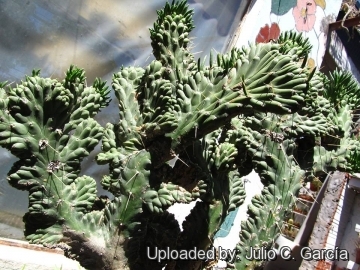 Austrocylindropuntia subulata f. cristata Photo by: Julio C. García
Austrocylindropuntia subulata f. cristata Photo by: Julio C. García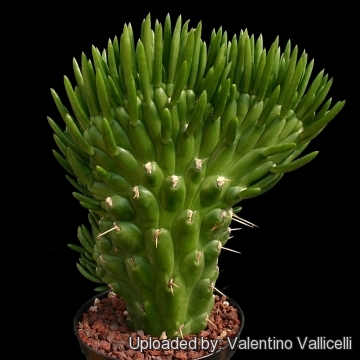 Austrocylindropuntia subulata f. cristata Photo by: Valentino Vallicelli
Austrocylindropuntia subulata f. cristata Photo by: Valentino Vallicelli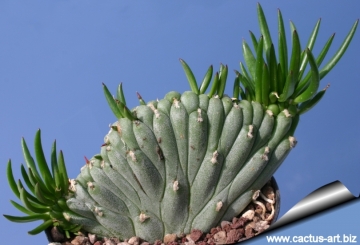 Austrocylindropuntia subulata f. cristata Photo by: Cactus Art
Austrocylindropuntia subulata f. cristata Photo by: Cactus Art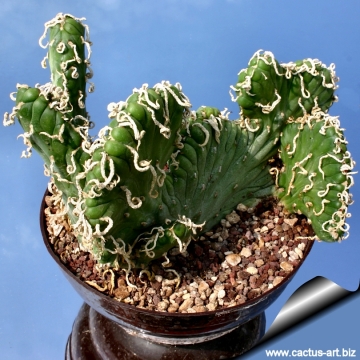 Austrocylindropuntia subulata f. cristata Photo by: Cactus Art
Austrocylindropuntia subulata f. cristata Photo by: Cactus Art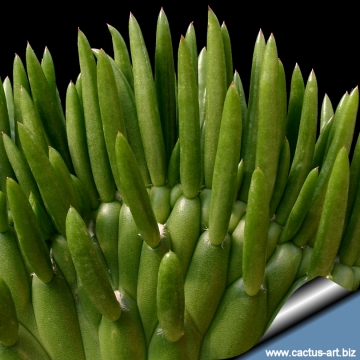 Austrocylindropuntia subulata f. cristata Photo by: Cactus Art
Austrocylindropuntia subulata f. cristata Photo by: Cactus Art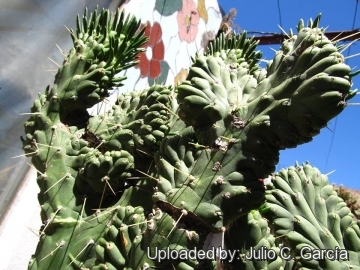 Austrocylindropuntia subulata f. cristata Photo by: Julio C. García
Austrocylindropuntia subulata f. cristata Photo by: Julio C. García Austrocylindropuntia subulata f. cristata Photo by: Valentino Vallicelli
Austrocylindropuntia subulata f. cristata Photo by: Valentino Vallicelli Austrocylindropuntia subulata f. cristata Photo by: Valentino Vallicelli
Austrocylindropuntia subulata f. cristata Photo by: Valentino VallicelliCultivation and Propagation: They are semi-hardy. Make sure your Opuntia subulataSN|4096]]SN|4096]] is not exposed to temperatures below -4°C or it may die. Nevertheless it is a good advice never let the night-time temperature fall below 5°C. Water regularly in summer, but allow to dry fully before watering again. It needs a well-drained soil mix, with small gravel added to ensure drainage. During the winter months it should be rather kept dry, and water is restricted to only enough to keep the stems and branches from shrivelling. Since these are big sized plants, and they need plenty of space for their roots, repotting should be done every other year, or when the plant has outgrown its pot.
Propagation: Cuttings in summer (Cuttings will root only in hot weather)
Your Photos

by Cactus Art

by Cactus Art




















